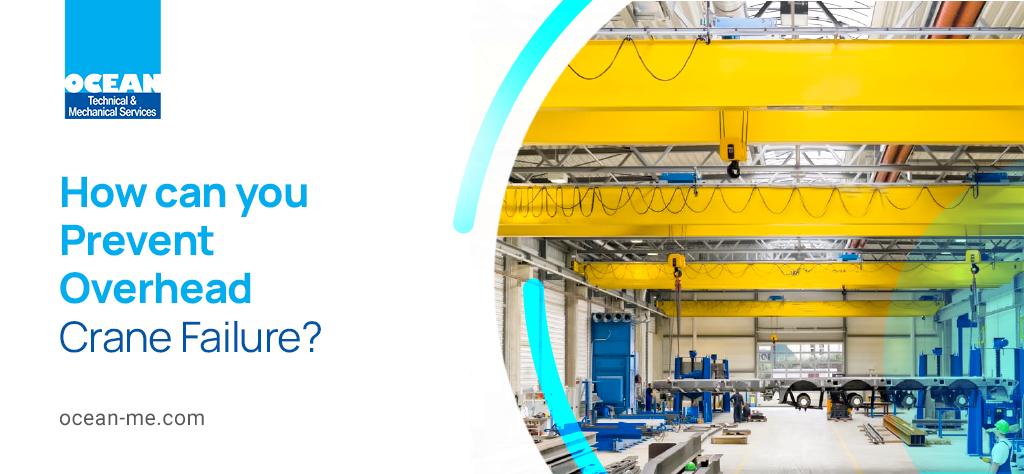Lifting equipment (primarily cranes) is required by all industries, large and small, to raise the huge loads and other equipment of the company. Now, unlike a typical vehicle, overhead crane failure must be handled with caution and training since they are massive, and their efficient handling affects not only the equipment surrounding them but also the lives of many people.
Although people may be capable of operating a crane, facts suggest otherwise. Between 2011 and 2015, it is projected that 44 individuals were injured or killed by overhead crane failures, according to labour data.
It is therefore vital to comprehend the threats posed by overhead cranes, as well as the steps and guidelines that may be implemented to ensure overhead crane safety and avoid failure.
You may also like to read:
- Understanding the Concept of Wireless Condition Monitoring
- Guidelines For Condition Based Maintenance
- Vibration Sensors: Functions and Applications
Reasons for Overhead Crane Failure
- Crane overload is one of the most common problems that occur. This arises as a result of placing an excessive load on the crane that exceeds its capacity. Not only will this cause significant damage to the machinery, but it will also harm people’s lives.
- The possibility of falling materials is another major hazard. The causes may vary, such as crane operator error, mechanical failure, slippage, and so on. Any of these events will result in accidents and injuries, some of which may be deadly to the employees.
- An electrical failure is another major threat that can occur. The majority of the incidents occur when a metal surface comes into contact with electricity, posing a risk to the personnel in the surrounding area and resulting in further fatal injuries.
- The usage of secondary and primary brakes is another risk to the overhead cranes. The cranes include primary and secondary brakes in case of a power outage. If the brakes fail, it could result in serious and fatal accidents resulting in damages to equipment and injuries to people.
How to Prevent Overhead Crane Failure?
With so many risks and hazards associated with an overhead crane, it’s critical to take precautions to avoid overhead crane failures and maintain the safety of personnel on the job. Let’s take a look at some overhead crane safety measures to help you minimise the danger of an overhead crane failure.
- The cranes must be thoroughly inspected by professionals following CMAA specifications. Inspection equipment must be of high quality and meet industry standards. It’s also worth noting that cranes shouldn’t be overloaded or overfilled above their capability. As a result, regular checks must be performed, as well as proper tracking of any faults or difficulties that may arise.
- When constructing a crane for your sector, it’s critical to keep the environment in mind. The environment has a big influence. The metal sections of cranes can rust due to factors such as heat, chemicals, steam, dust, humidity, or moisture. As a result, it is crucial to consider such elements to extend the cranes’ lifespan.
- It is also necessary to pay attention to and follow the directions provided by the crane’s manufacturer and provider. The manufacturer’s service recommendations will aid in the crane’s long-term maintenance.
- Operators and workers should receive enough training. Formal training in their speciality should be provided to the operators. They should be given sufficient information on crane terminology and parts, as well as the crane’s purposes and risks. They should be able to explain how cranes work as well as the cranes’ maintenance procedures. They should also be taught how to operate cranes using simple hand gestures. It is also critical to provide them with the essential electrical handling, wiring, and machinery practises training. Crane failure, as well as injuries or accidents caused by it, can be avoided with a well-equipped and qualified workforce.
- Additionally, personnel must be active and alert when lifting the weights. Employees will follow and understand proper directions if necessary hand signals, warning lights, and radios are used. While operating cranes, personnel must also be communicative and attentive. This will keep any mishandling or accidents to a minimum.
- When the crane comes on-site, it should also be determined who will be in charge of the pre-job safety planning. To avoid any mishaps, make sure that the staff are dressed properly, including a PPE kit, and foot and eye protection.
Read more about:
- Ultrasonic Steam Trap Testing
- A Survey On Steam Trap Inspection
- A Festoon Cable System Overview – Types & Parts
- Sonotec’s Acoustic Camera Now In Ocean’s Line Of Predictive Maintenance Devices
Conclusion
Investing in an overhead crane is a major choice for a company because it entails a significant financial investment. But, at the same time, it boosts workplace productivity and efficiency while also protecting employee safety. Following the safety precautions and being aware of all potential hazards will help you in making the best decision the next time you need to purchase such lifting equipment. This will not only aid in the preliminary inspections, but it will also help to avoid any severe overhead crane failure. If you are looking for the best overhead crane services in Oman with minimal risks and failure, Ocean Technical and Mechanical Services is the perfect option for you.



